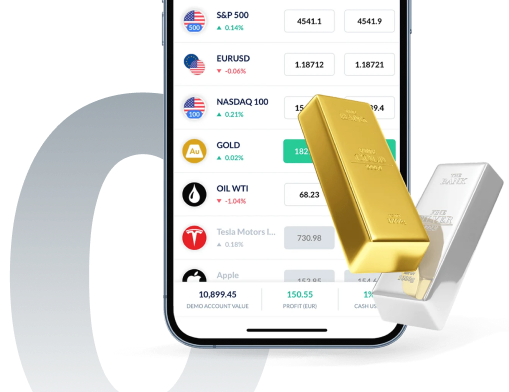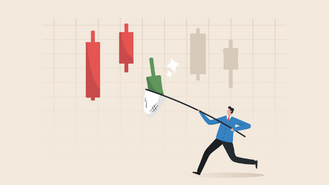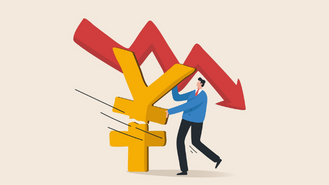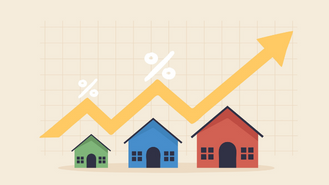What is volatility in the markets? A comprehensive guide to navigate it

What is volatility in the market?
Volatility is a statistical measure that quantifies the degree of variation in an asset's price over a certain period. It is commonly used as a measure of risk in the financial markets, reflecting the uncertainty and variability of asset prices over time.
There are different types of volatility that are commonly used to describe market dynamics, including:
- Historical: it is based on past price movements and is calculated using standard deviation. It measures the degree of price variation of an asset over a specific period.
- Implied: this kind of volatility is based on the price of options contracts and reflects the market's expectations of future price movements. It is calculated by comparing the price of an option contract to the current price of the underlying asset.
- Realized: its value is based on actual price movements and reflects the degree of variation in an asset's price over a specific period. It is calculated by measuring the standard deviation of daily price changes over a given time frame.
Trade Demo: Real trading conditions with zero risk
Trade risk-free on Skilling’s award winning platforms with a 10k* demo account.

Each of them provides a different perspective on market dynamics and can be used to inform investment decisions. Understanding the different types of volatility and how they are calculated is essential for investors seeking to manage risk and make informed investment decisions.
How volatility affect investors
Volatility can have a significant impact on investment portfolios as it can create drastic movements in prices, impacting client sentiment, risk appetite, and the overall performance of investments.
- Risk management
- High levels of volatility can increase the risk of investment portfolios. Investors may need to adjust their risk management strategies to mitigate the impact of market volatility.
- Investment returns
- It can impact investment returns, both positively and negatively. High levels of volatility can provide opportunities for higher returns but also increase the risk of losses.
- Investor sentiment
- Market volatility can impact investor sentiment, leading to changes in risk appetite and strategies. Traders may become more cautious during periods of high volatility, reducing the demand for riskier assets.
- Portfolio diversification
- Diversification can help investors reduce the impact of volatility on their investment portfolios. By investing in a variety of assets, traders can reduce their exposure to individual assets or sectors that may be more risky.
How does volatility change in different markets?
Volatility can vary significantly across different markets and asset classes. Investors need to consider the potential risks and opportunities associated with the asset when making an investment.
Stocks can be highly volatile, particularly during periods of economic uncertainty or market stress. Smaller stocks and emerging market stocks are often more volatile than larger, more established companies.

Currency exchange markets can be highly volatile as well, with exchange rates fluctuating rapidly in response to economic and political events. Some currencies are more volatile than others, with emerging market currencies often exhibiting higher levels of volatility than major currencies like the US dollar and Euro.

Commodities like gold, oil, and agricultural products can be volatile too. Their prices can fluctuate in response to supply and demand factors, geopolitical events, and weather patterns.

Real estate markets can also be volatile, with prices fluctuating in response to economic conditions, interest rates, and supply and demand factors.

Bonds, on the other hand, are generally less volatile, but it can vary depending on factors like interest rates, credit risk, and inflation expectations.

Ready to take your trading game up a notch?
Our trading app is here to give you all the tools and guidance you need, no matter your experience level.

What opportunities and risks does volatility present?
Volatility in the financial markets can present both opportunities and risks for investors. When markets experience significant fluctuations in prices, it can be a challenge for traders to know how to react. However, understanding how volatility impacts different markets can help them make informed decisions and manage their portfolios more effectively.
One way it can create opportunities is by providing higher returns. During periods of market stress, some stocks or asset classes may be oversold, creating opportunities for bargain purchases. For investors with a longer investment horizon, taking advantage of these opportunities can lead to higher returns over time.
Another way to create opportunities is through active trading. Short-term price movements can provide opportunities for active traders to generate profits by buying and selling assets in response to market movements.
Volatility can also present opportunities for portfolio diversification. Some asset classes or sectors may perform better than others during periods of market stress. By diversifying their portfolios, investors can mitigate risk and potentially benefit from the positive performance of certain sectors or asset classes during volatile times.
However, market volatility also comes with risks. High levels of fluctuation can increase the risk, particularly for investors with a shorter investment horizon. During periods of market stress, some stocks or asset classes may experience significant losses, resulting in portfolio declines.
In addition, it can impact investor sentiment, leading to emotional investing decisions. Investors may become more risk-averse during periods of high volatility, leading to missed opportunities or inappropriate investment decisions.
Another risk associated with this indicator is liquidity risk. Market fluctuation can impact liquidity, with some assets becoming harder to buy or sell during periods of market stress. This can create challenges for investors looking to adjust their portfolios or exit positions.
By understanding the potential risks and opportunities associated with market volatility and implementing effective risk management strategies, investors can manage the impact of market fluctuation on their investment portfolios.

Past incidents of market volatility and how famous traders dealt with it
Throughout history, there have been numerous incidents of market volatility, including economic crashes and financial crises. Famous traders and investors have navigated these events in different ways, using various strategies to manage risk and capitalize on opportunities.
One example of a past incident of market volatility is the 2008 financial crisis.
This event was triggered by a collapse in the U.S. housing market, leading to widespread losses in the financial sector and a global economic downturn. During this time, many investors experienced significant losses in their portfolios. However, some traders were able to manage the impact of the financial crisis by implementing effective risk management strategies.
For example, some hedge funds and asset managers used short-selling strategies to profit from declining asset prices. Other investors took advantage of the crisis to purchase undervalued assets, such as distressed debt or real estate, which later increased in value.
Another example of market volatility is the dot-com bubble of the late 1990s.
During this time, the stock prices of many tech companies soared to unprecedented levels, fueled by investor hype and speculation. However, this bubble eventually burst, leading to a significant decline in stock prices and widespread losses for investors.
Despite the losses incurred during the dot-com bubble, some traders were able to profit from the volatility by using again short-selling strategies or by investing in companies that were not caught up in the hype. Famous investor Warren Buffett, for example, avoided investing in tech companies during this time and instead focused on undervalued companies in other sectors.
Past incidents of market volatility have been managed in different ways by famous traders and investors. While some have suffered significant losses, others have been able to capitalize on opportunities by implementing effective risk management strategies and identifying undervalued assets. By studying these past incidents, investors can gain insights into how to manage the impact of future market volatility on their portfolios.
Experience Skilling's award-winning platform
Try out any of Skilling’s trading platforms on the device of your choice across web, android or iOS.

Summarizing the potential of volatility
In conclusion, understanding volatility is essential for traders who want to manage risk and capitalize on opportunities in different markets. It can present both risks and opportunities, and investors must be prepared to navigate these conditions using effective strategies.
To learn more about this and other related topics, readers can explore a range of articles and resources across the site. Some relevant topics may include risk management strategies, understanding trading styles, CFD trading and much more.
Whether you are a beginner or an experienced investor, staying informed about volatility can help you make informed decisions and achieve your financial goals. So, take the time to explore the resources available and stay up-to-date on the latest developments in the markets.
Not investment advice. Past performance does not guarantee or predict future performance.










